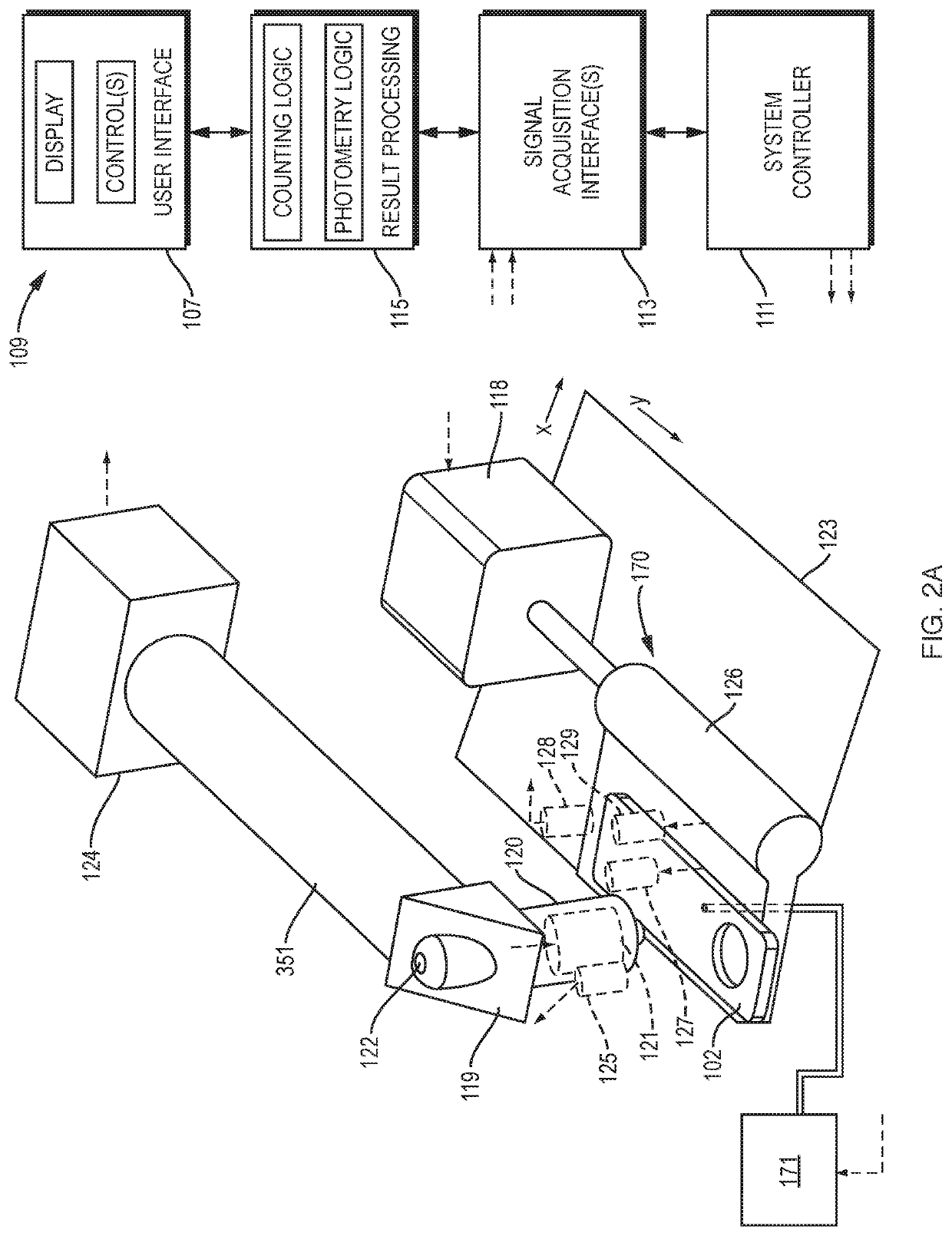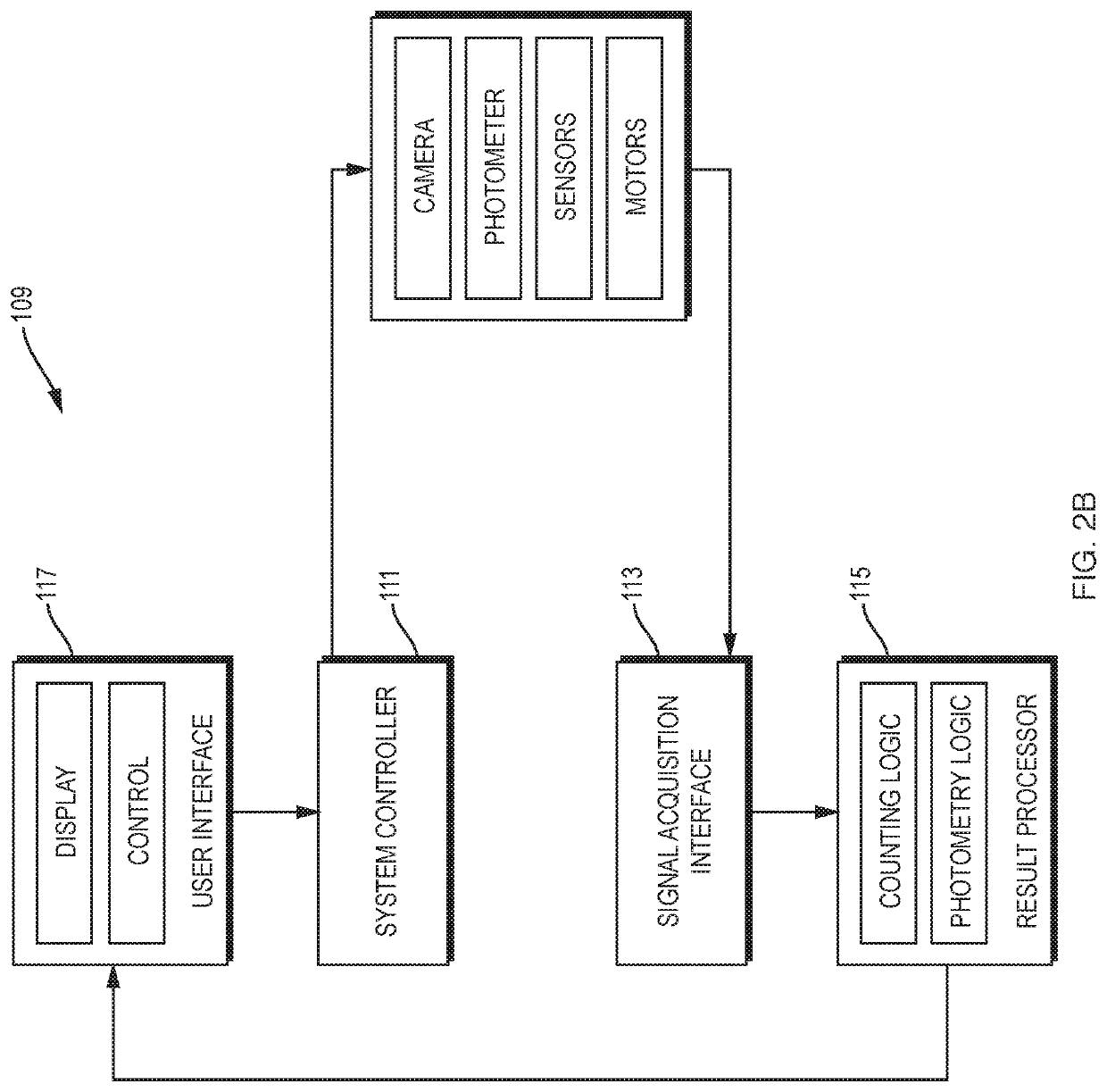Automated microscopic cell analysis
a cell analysis and microscopy technology, applied in the field of analytical instruments, can solve the problems of unreliable cell counts with high standard deviations, difficult to accurately predict the cell count of cells, so as to improve sample preparation, eliminate air bubbles, and improve quantitative accuracy
- Summary
- Abstract
- Description
- Claims
- Application Information
AI Technical Summary
Benefits of technology
Problems solved by technology
Method used
Image
Examples
Embodiment Construction
[0047]Referring to FIGS. 1A, 1B, and 2A, an illustrative cell analyzer 100, according to the invention, includes a housing 106 that supports a removable reagent supply module 170 with a cradle 104 into which a test cartridge 102 can be inserted. The housing also supports a “go” button 110, a display screen 108, and a printer 112. Other configurations of the analyzer are of course possible without departing from the invention. The “go” button's function could be triggered by insertion of the test cartridge or be provided through soft prompting on a touchscreen instead of through the use of a discrete button. The printer could be housed separately from the analyzer. And while the cartridges may shaped like microscope slides, a working system could be built around cartridges dimensioned in a variety of other shapes and sizes.
[0048]In operation, a technician or other operator first collects a sample, such as a blood sample from a patient finger stick, heel stick, or by venipuncture in t...
PUM
| Property | Measurement | Unit |
|---|---|---|
| unit volume | aaaaa | aaaaa |
| depth | aaaaa | aaaaa |
| depth | aaaaa | aaaaa |
Abstract
Description
Claims
Application Information
 Login to View More
Login to View More - R&D
- Intellectual Property
- Life Sciences
- Materials
- Tech Scout
- Unparalleled Data Quality
- Higher Quality Content
- 60% Fewer Hallucinations
Browse by: Latest US Patents, China's latest patents, Technical Efficacy Thesaurus, Application Domain, Technology Topic, Popular Technical Reports.
© 2025 PatSnap. All rights reserved.Legal|Privacy policy|Modern Slavery Act Transparency Statement|Sitemap|About US| Contact US: help@patsnap.com



